This delicious, easy to make, smoky and creamy eggplant dish is my version of the famous Middle-Eastern babaganoush, perfect for when you don't have a barbecue.
I'll never forget the times in Dubai when the Arabic Chef made baba ganoush. The smell of eggplants cooking over charcoal, the way he purposely burnt them on the outside, and that smoky taste of the finished babaganoush was so heavenly good!
It became one of my favourite mezzeh to order in a restaurant.
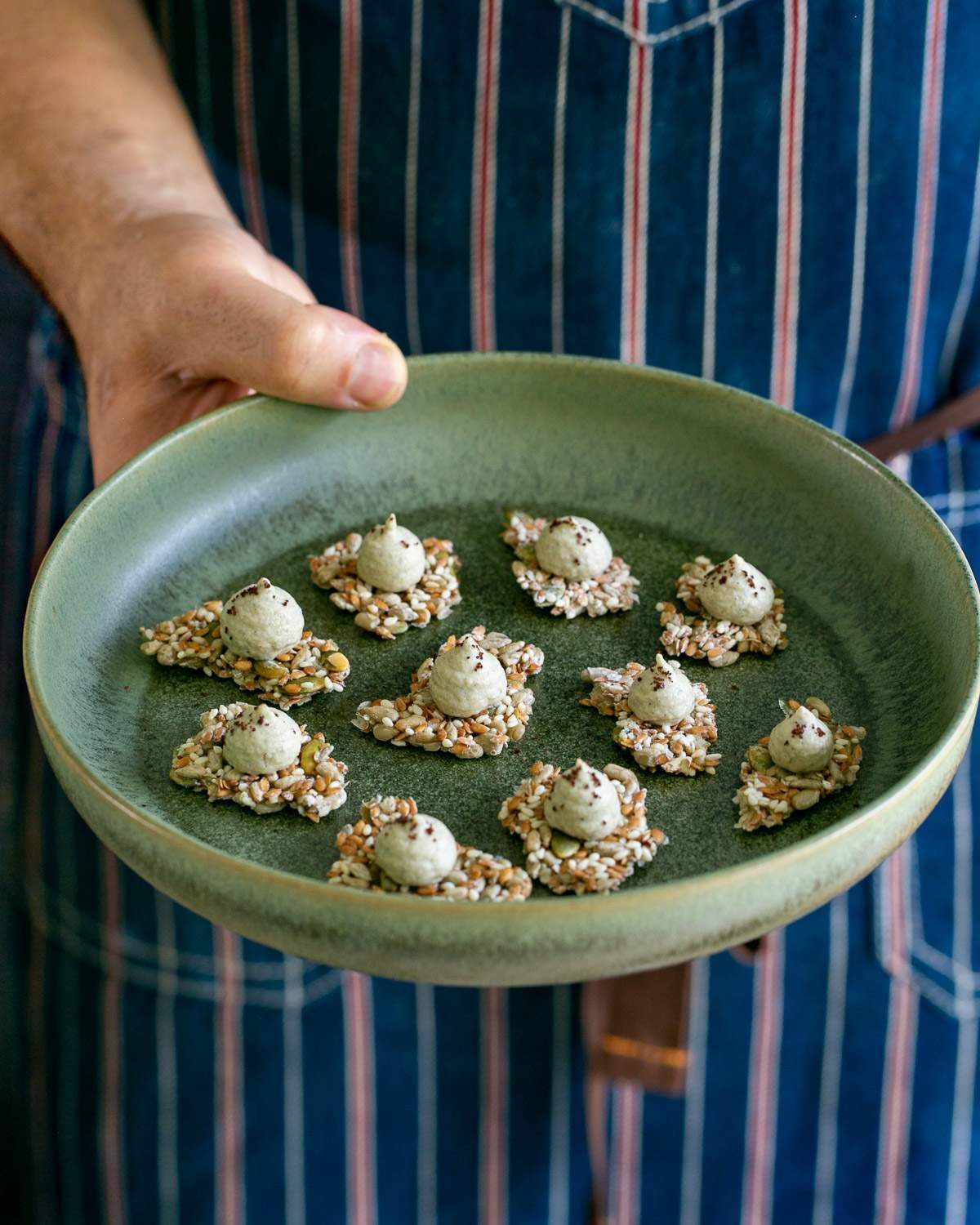
Later on, I learned that the same flavours can be re-created when you burn eggplants over your gas flame at home.
Jump to:
So, for those who don't have a charcoal barbecue at home but still want that smoky eggplant flavour, follow my simple recipe below.
WHAT IS BABAGANOUSH?
Babaganoush or baba ganoush is said to have originated in Lebanon but is a widely known dish in the Eastern Mediterranean. Together with dips and salads like hummus and tabouleh it is a common part of the mezze selection.
Babaganoush is based on eggplants that are usually cooked over charcoal and then mixed to a creamy texture with tahini and other ingredients.
BABAGANOUSH INGREDIENTS
You just need these 6 simple ingredients that should be easily available to you for this recipe.
Eggplants When buying them, look for a shiny skin. They should be slightly firm but not hard and heavy for their size.
Lemon babaganoush needs acidity, hence lemons are used in this recipe.
Garlic is a typical ingredient for babaganoush and added raw. It can be left out or cooked beforehand if you want to avoid raw garlic in your dip.
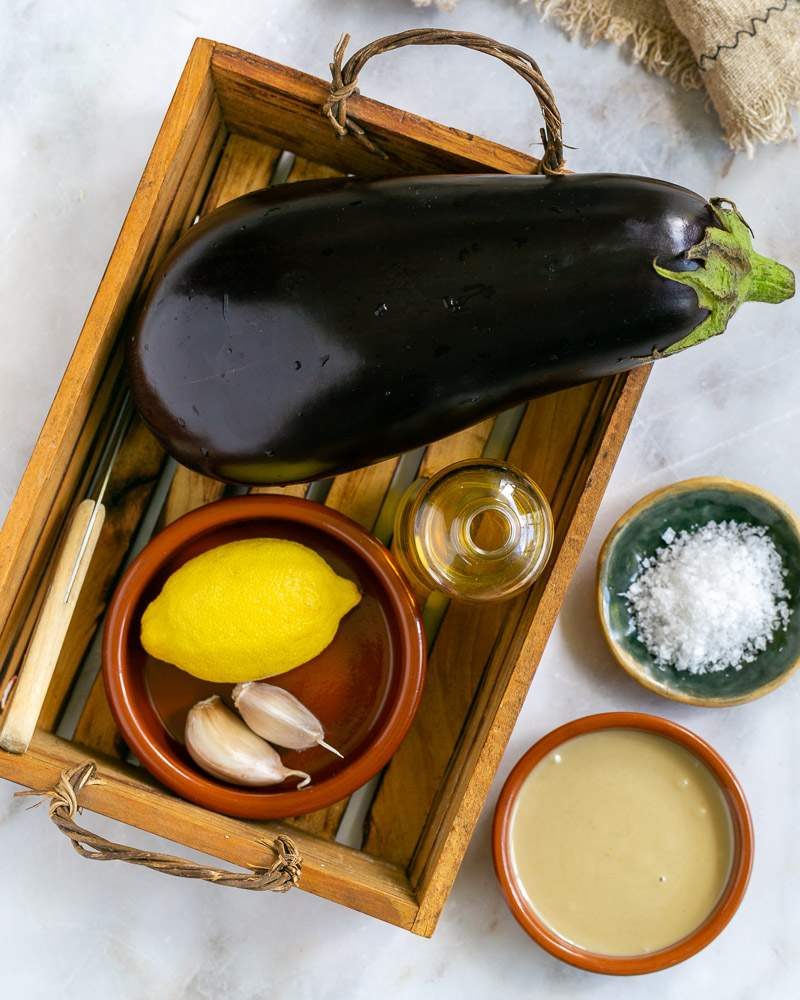
Tahini Paste is a sesame paste that gives the dish it's creamy texture. I use hulled tahini as it is much smoother and has a rather pourable consistency.
Olive oil to add richness and complexity. Aim for good quality EVO oil.
Salt for seasoning.
Other ingredients you could add are cumin powder, sumac powder, coriander or black pepper.
HOW TO MAKE SMOKY BABAGANOUSH WITHOUT A BBQ
Making Babaganoush without a BBQ is possible, that is if you have a gas flame on your stove. The burning of the skin is what translates that smoky flavour into the eggplant and makes the babaganoush so deliciously good.
WARNING! It will be messy!! the eggplant will leave water and the burnt skin particles will mess up your stove. As a tip, once your stove top has cooled, start cleaning right away!
burning the eggplants
When we describe the process as burning the eggplant, we mean literally burning the eggplant. To do this, place the eggplant directly onto the gas flame.
The skin will start burning and you will notice that lovely smoky smell already.
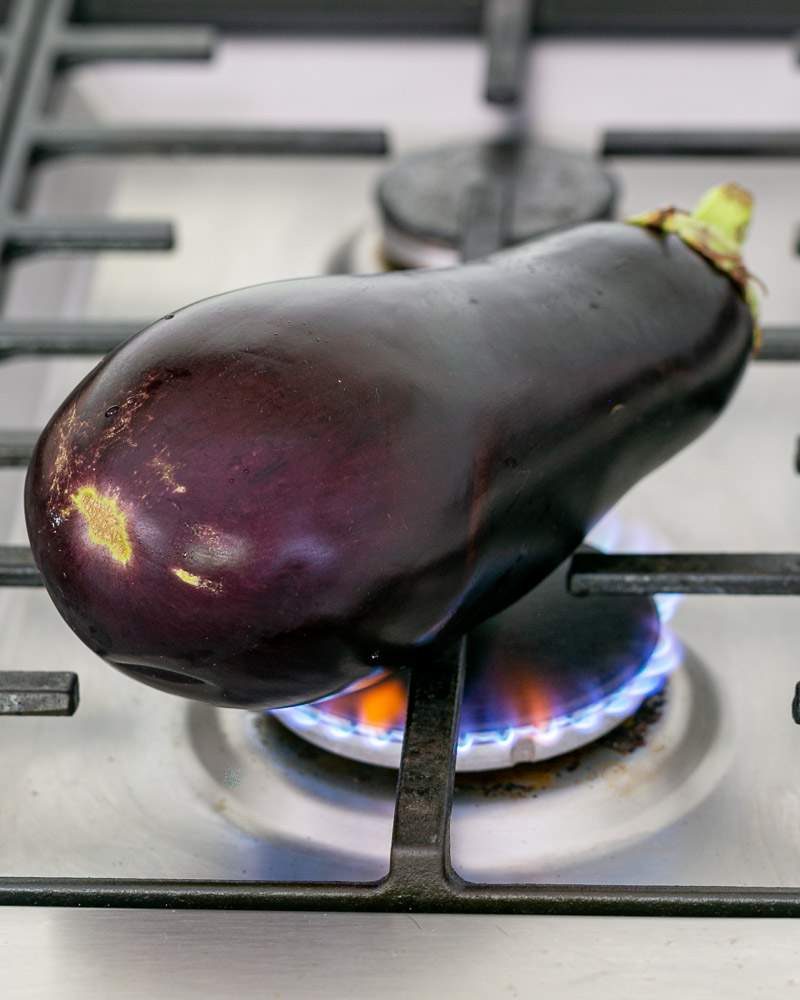
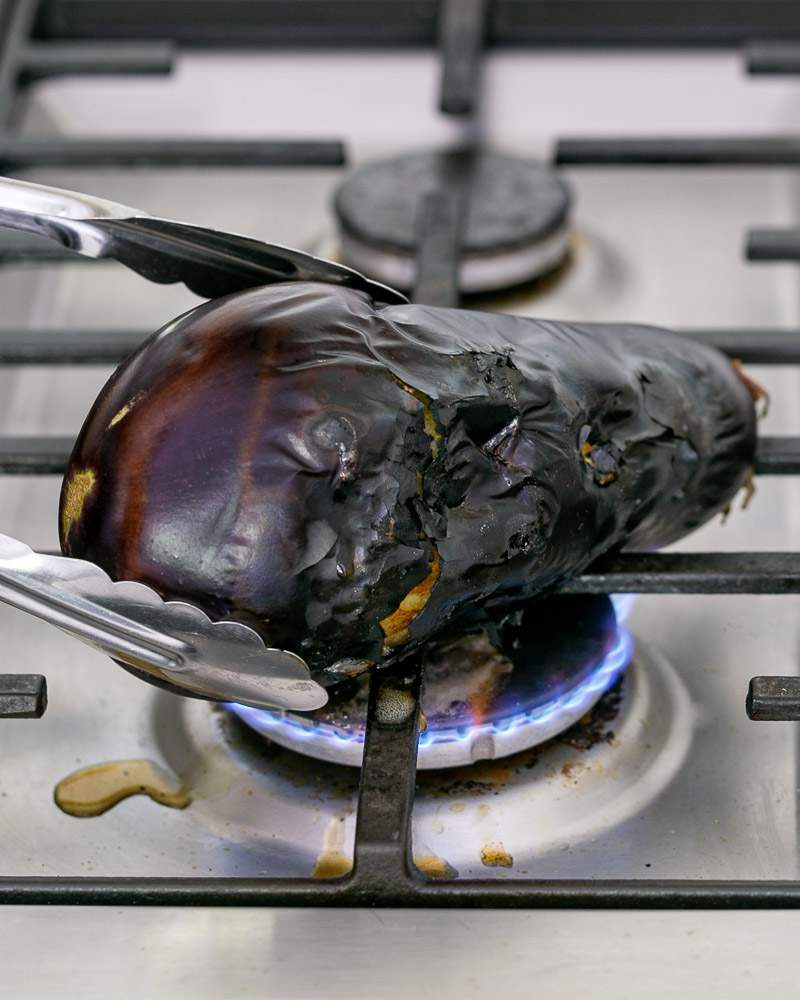
Now turn the eggplant on the side that hasn't been burned and continue that way until all sides are black and flaky.
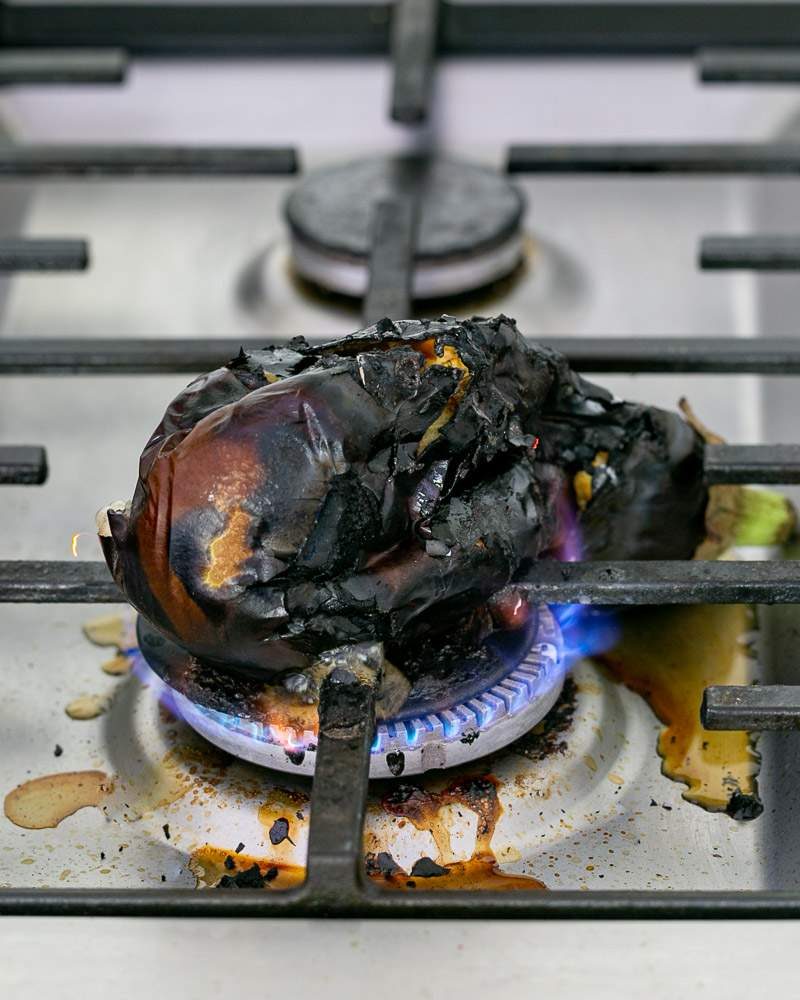
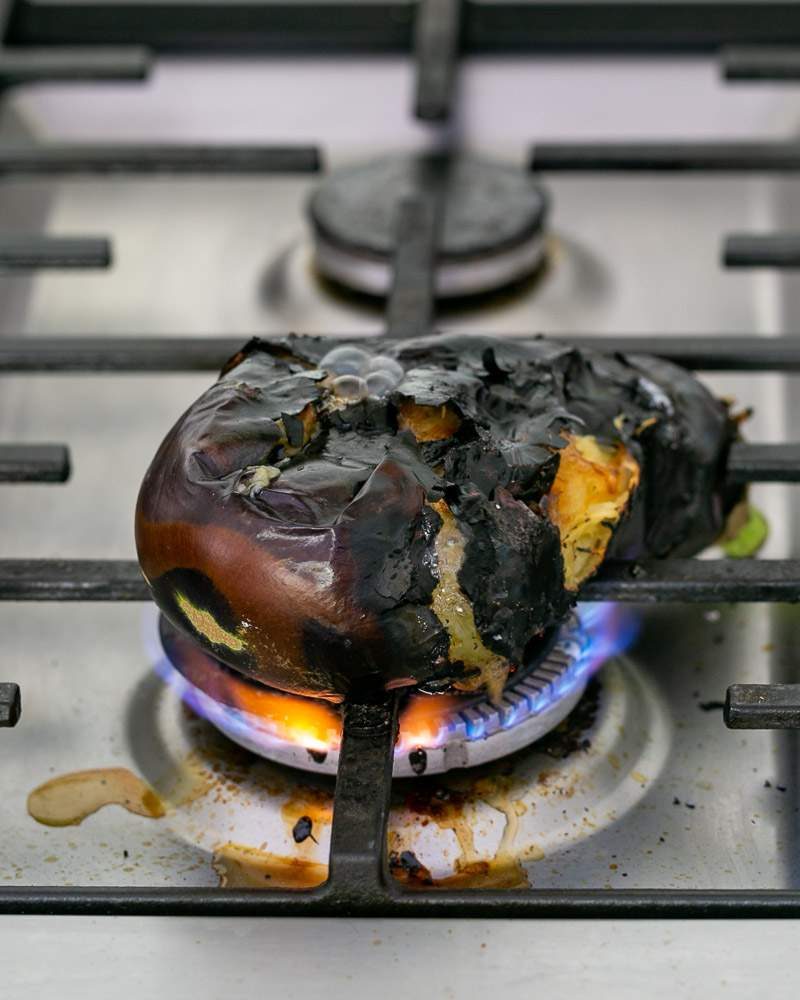
straining the eggplant
Prepare a bowl with a sieve and have a lid ready that fits right on top of it. Transfer the eggplant onto the sieve and cover it with the lid. This will do 2 things:
- The eggplant will start steaming inside the bowl which is great in case there are parts of the eggplant that are still slightly undercooked.
- The remaining liquid inside the eggplant will drain through the sieve, which helps in removing bitterness.
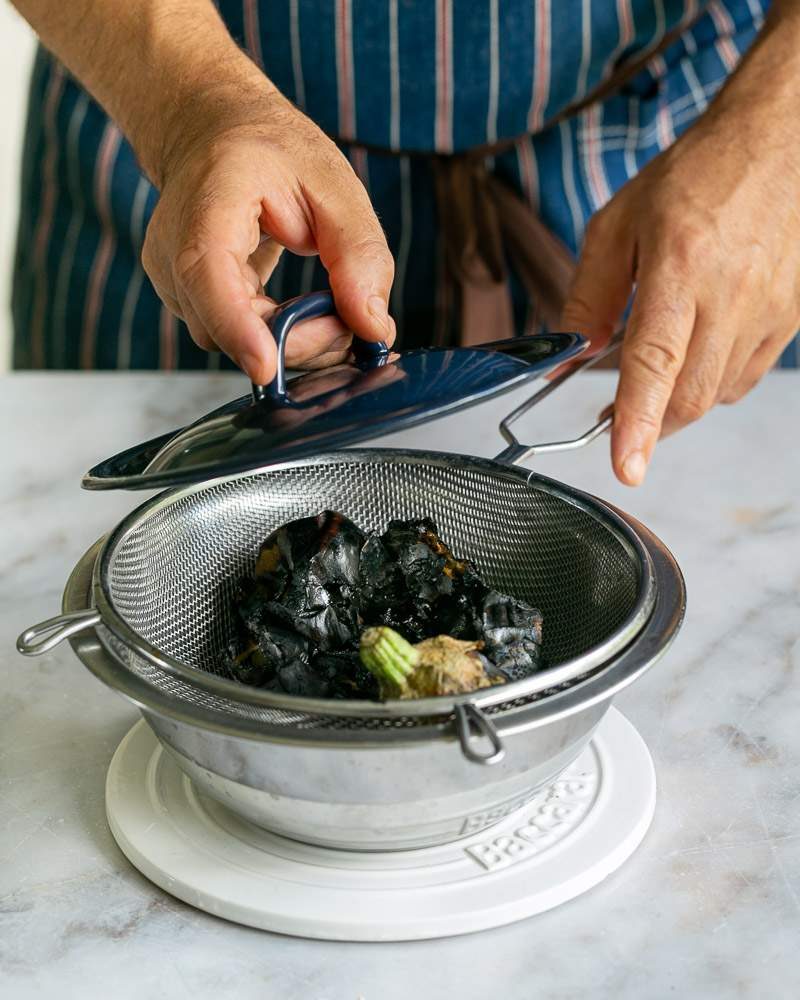
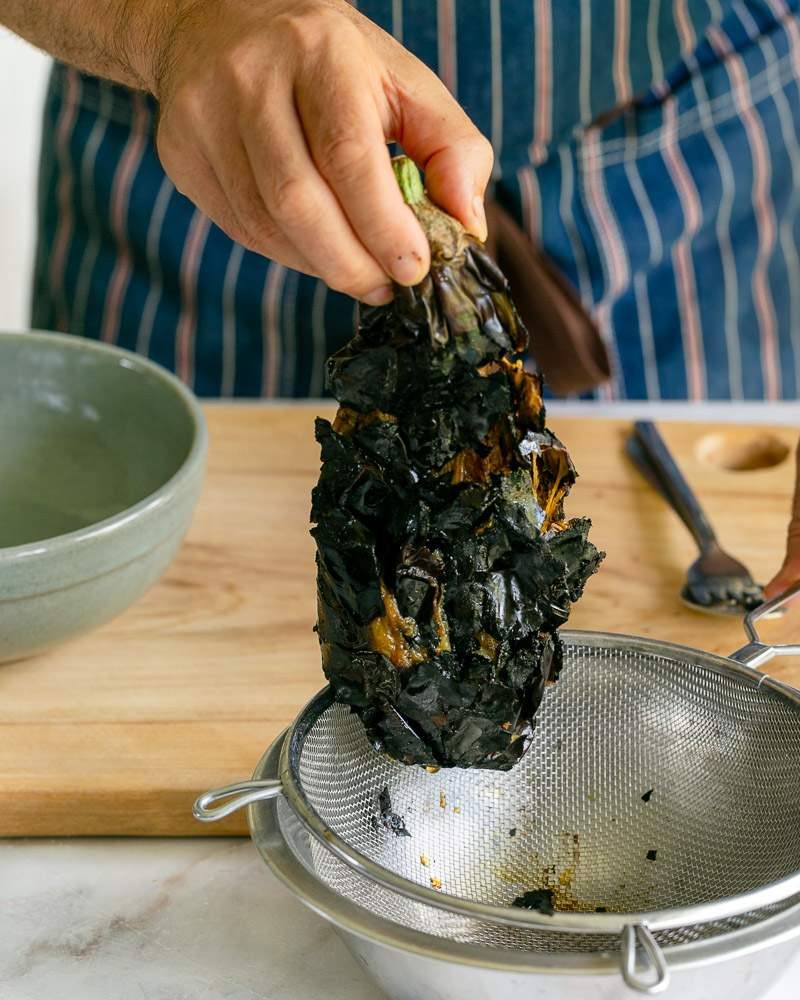
Leave it to cool for about 20 minutes and then proceed to the next step.
peeling the eggplant
Place the eggplant on a cutting board and peel away the burnt skin using a fork. I like to leave bits of skin on the eggplant, as it gives it a charred flavour and additional smokiness.
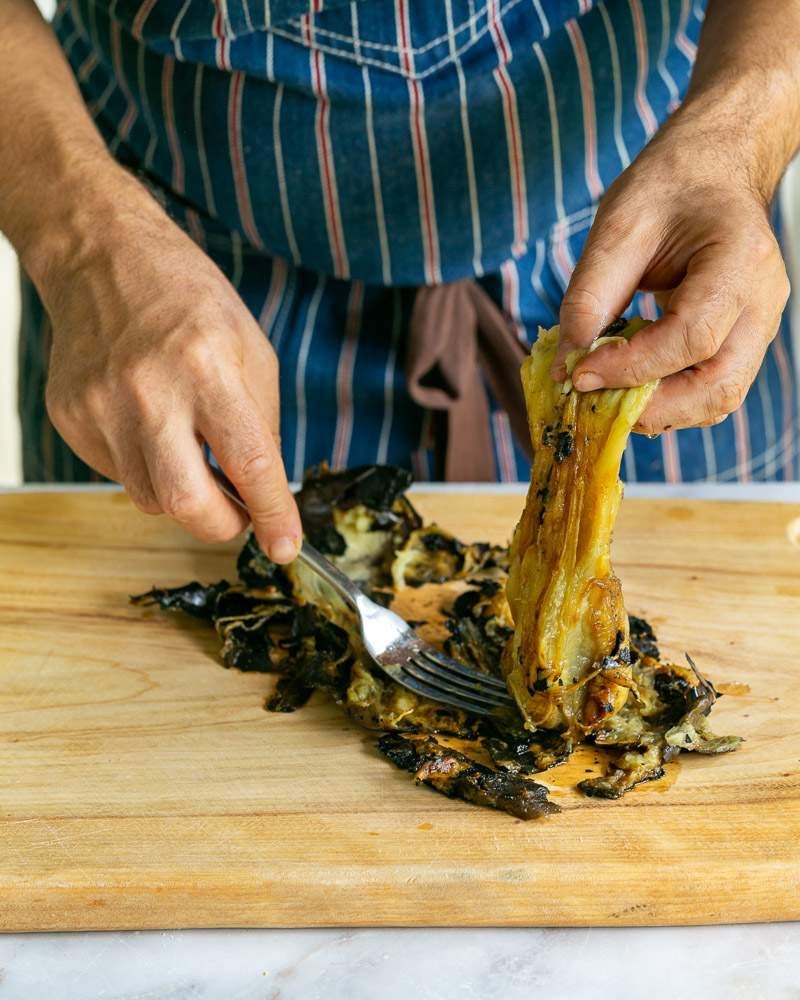
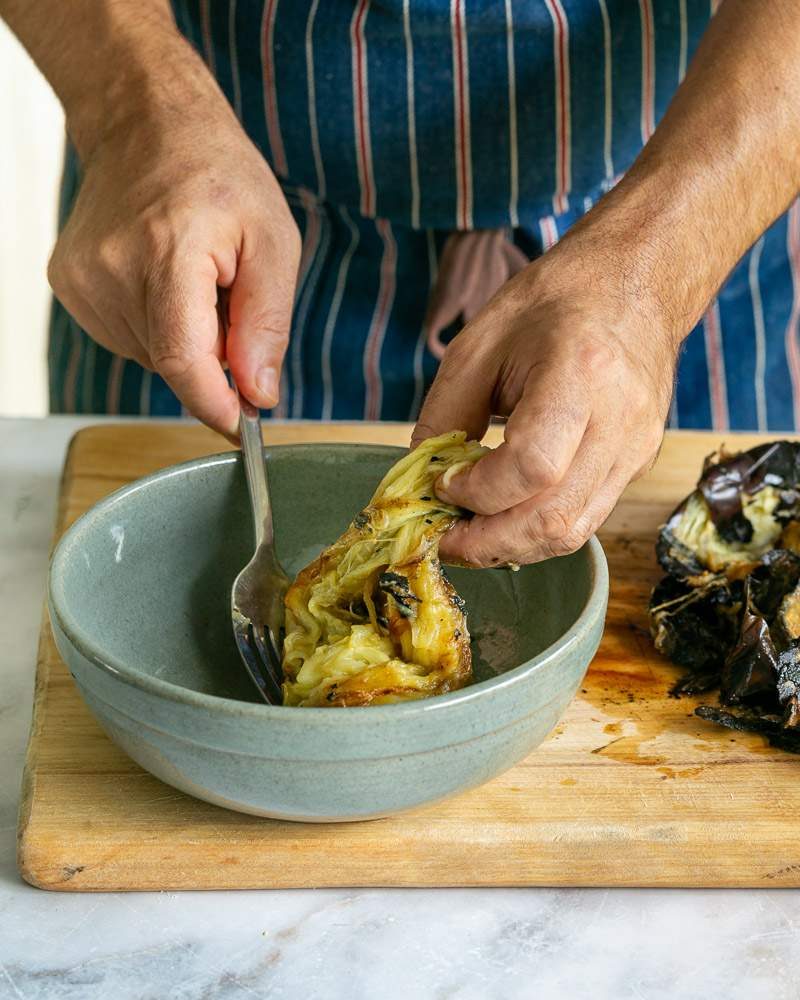
mixing the eggplant
First add the tahini, then lemon juice, grated garlic, olive oil and salt to the eggplant.
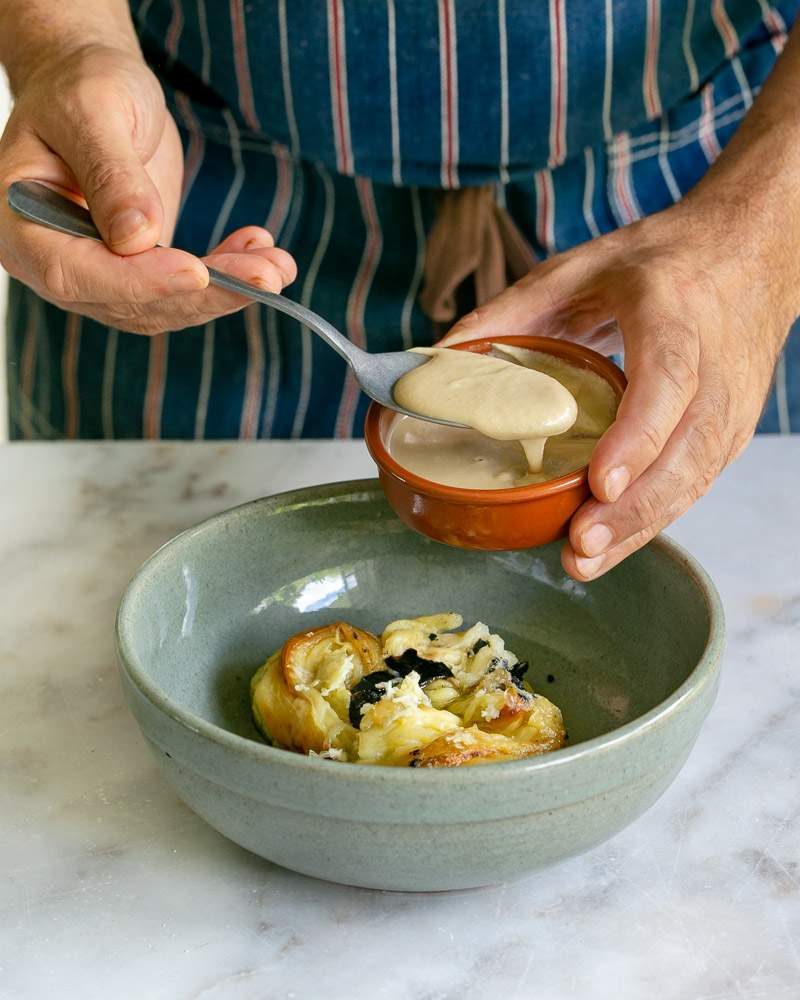
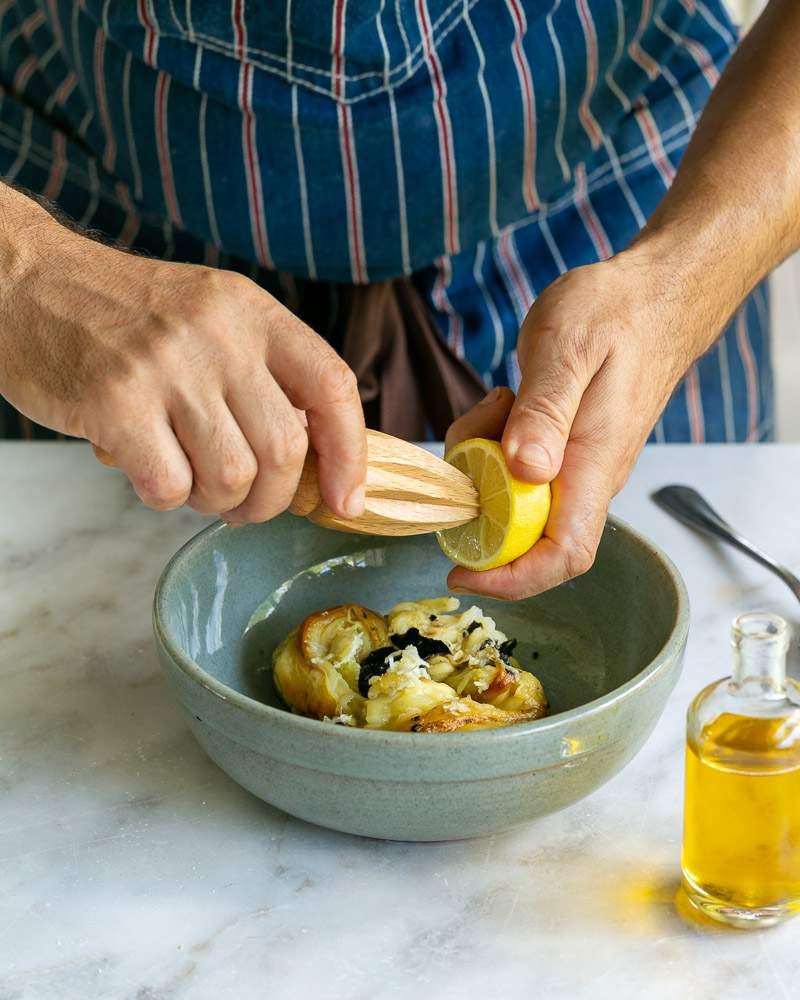
Mix everything into a fine puree using a food processor. I prefer this method as I like to use the eggplant babaganoush as a topping for canapes.
Using a squeezy bottle I pipe out the babaganoush hence the consistency needs to be a smooth puree.
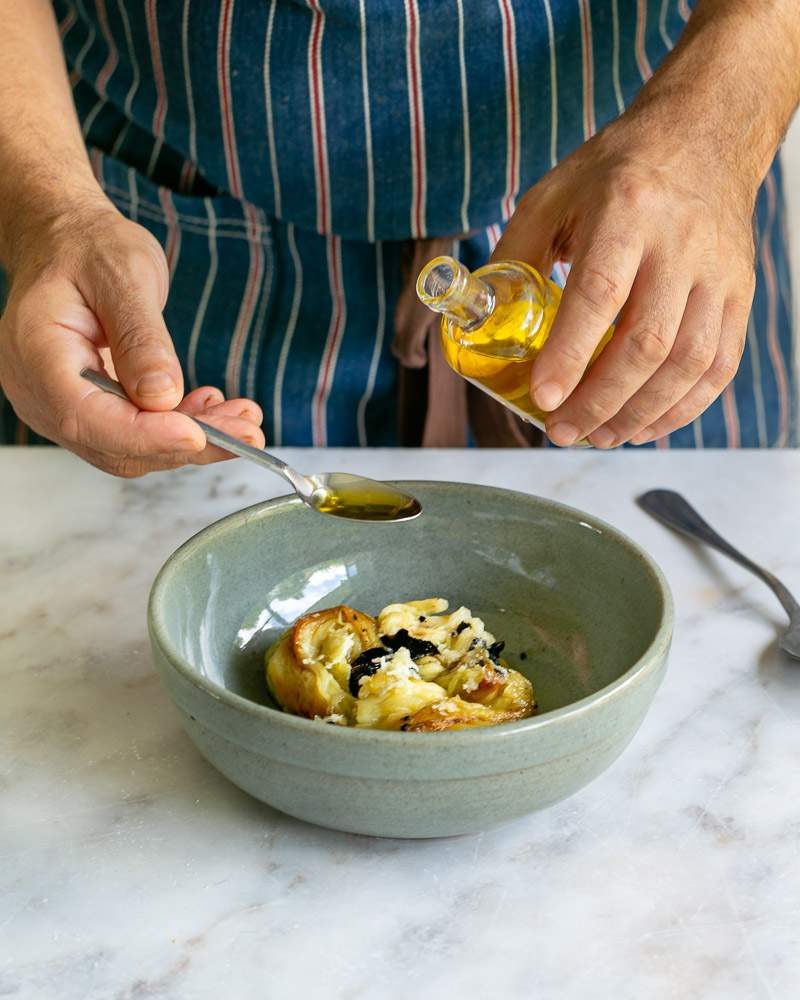
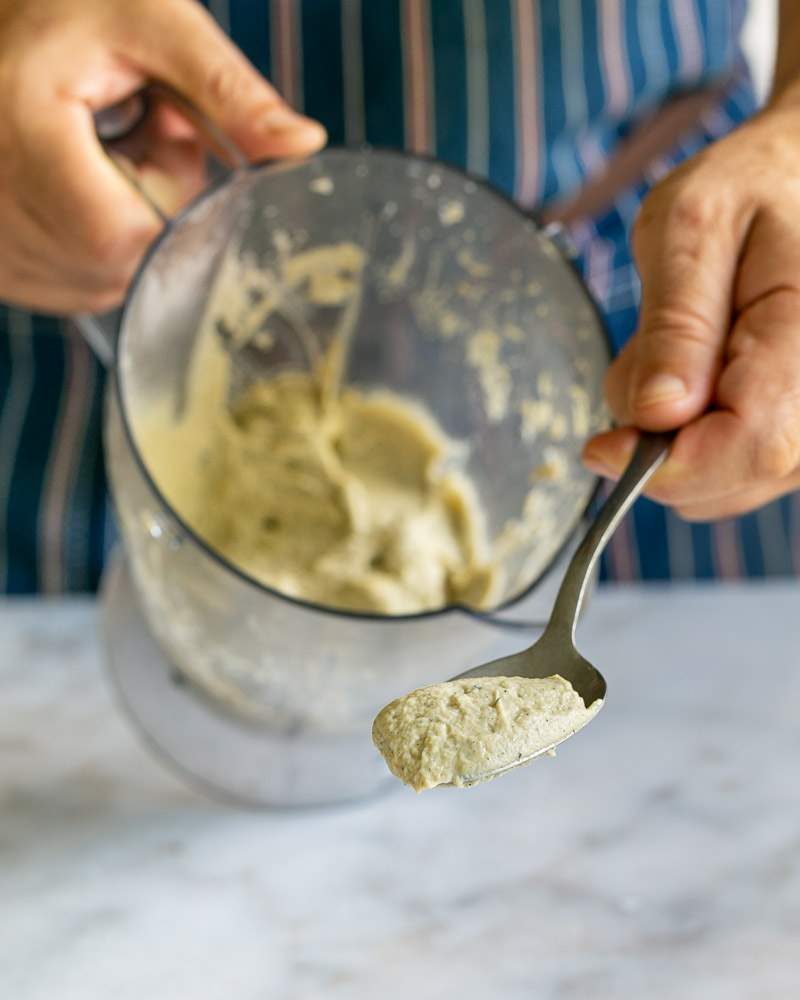
But if you decide to use the eggplant in a salad, you can chop it with a knife or use a fork to break down the flesh.
FAQ's
If you don't have a gas flame or BBQ you still can make babaganoush by roasting the eggplants in the oven. Simply cut them in half lengthwise and drizzle some olive oil over the cut side. Roast on very high temperature for 15-20 minutes and scoop out the flesh while still warm.
Oh yes, very much. It is dairy free, gluten free and plant based. Baba ganoush is a low carb dish too.
Babaganoush is Arabic slang - "Baba" stand for "daddy" and ganoush means "to spoil", in short it's a dish so yummy that you can literally someone with it.
Keep the babaganoush covered in an airtight container. Store in a refrigerator for up to 5 days.
HOW TO EAT IT
Eggplant babaganoush is best eaten as part of a meal or as a dip or even as a canape. You can serve it with flatbreads like naan bread or lavosh crackers or with a middle-eastern brunch with baked shakshuka.
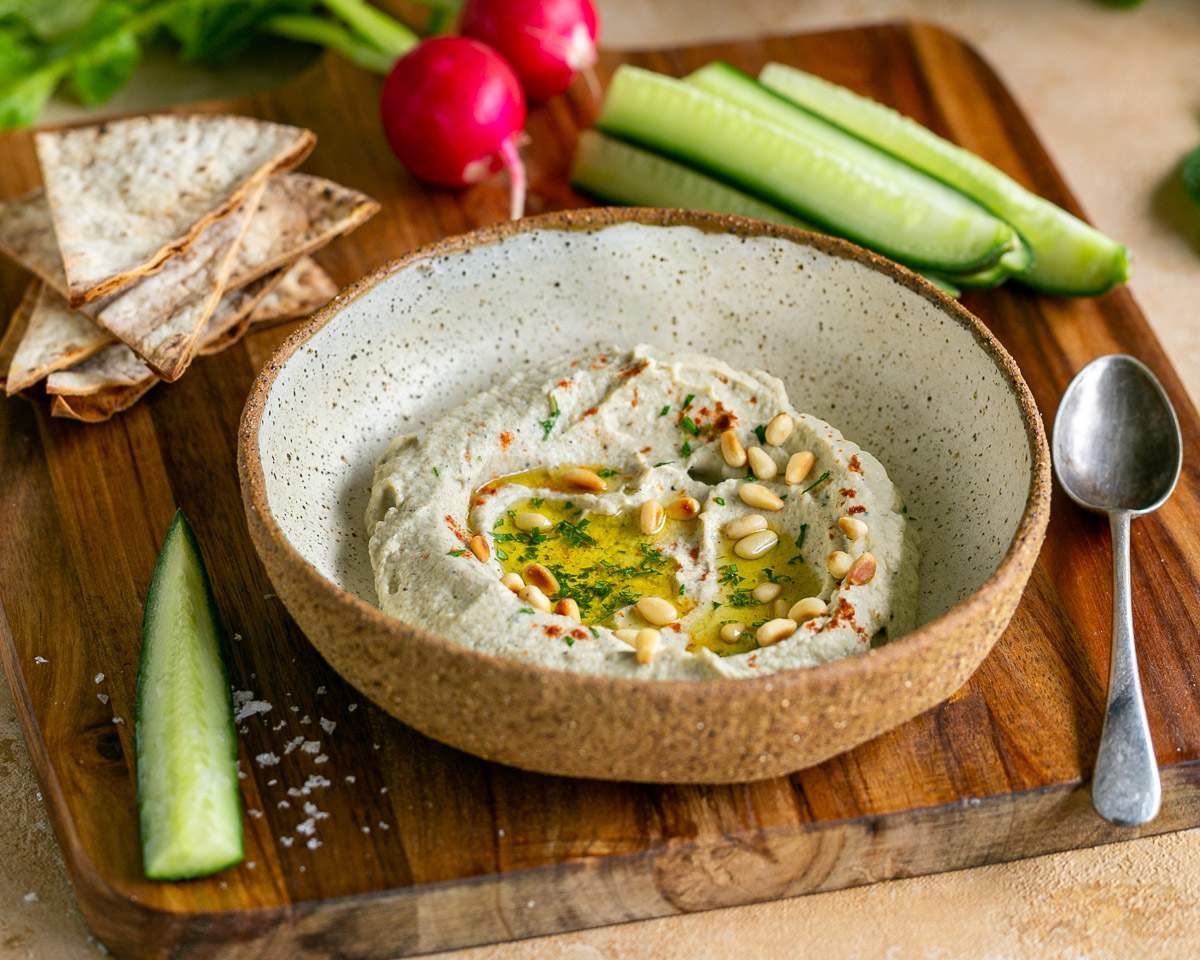
Babaganoush piped on seeded crackers makes a stunning vegetarian canape plus is a crowd pleaser.
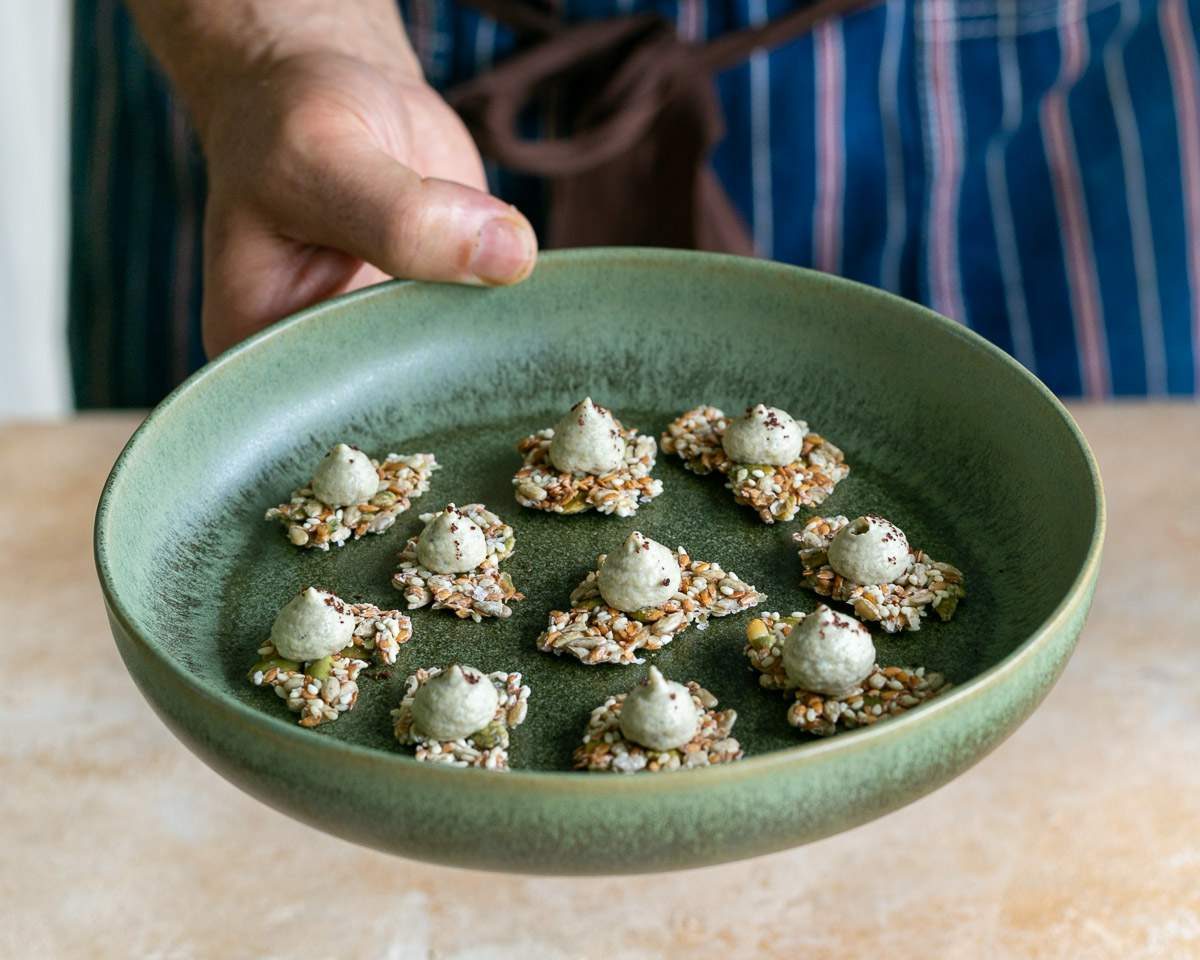
Otherwise serve it as a share style meal with dishes like these zucchini and pea fritters, this slow cooked lamb shoulder or these oriental braised lamb shanks.
Let me know how this baba ganoush recipe turns out for you in the comments below! I would love to find out if this has become your new favourite too😉
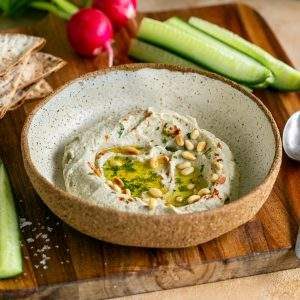
Smoky Eggplant Babaganoush
Equipment
- strainer/sieve
- bowl with lid
- blender (food processor)
Ingredients
- 1 medium eggplant
- 1 garlic clove peeled
- 2 tablespoon tahini paste
- ½ lemon juiced
- 1 tablespoon olive oil
- salt
Instructions
- Place the eggplant on a gas flame and burn the skin from all sides.
- Place the cooked eggplant in a strainer that is sitting on top of a bowl and cover with a lid. Let it sit for 20 minutes.
- Place the eggplant on a cutting board and peel away the burnt skin using a fork.
- Add the tahini, lemon juice, grated garlic, olive oil and salt to the eggplant flesh and transfer to a food processor.
- Mix to a fine puree and adjust the seasoning with salt.


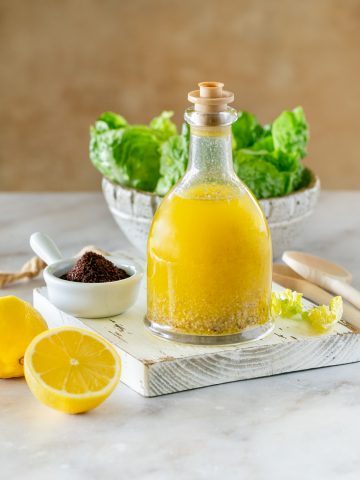
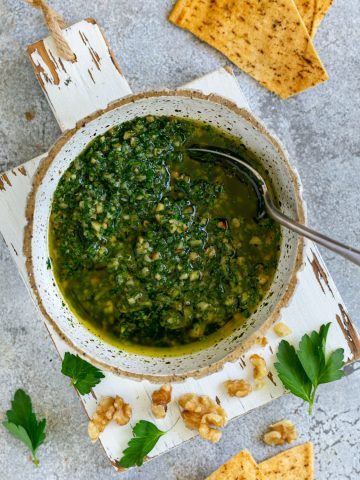
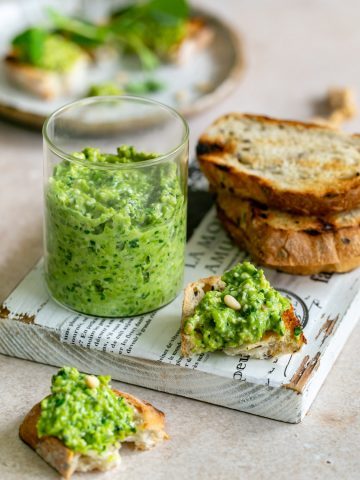
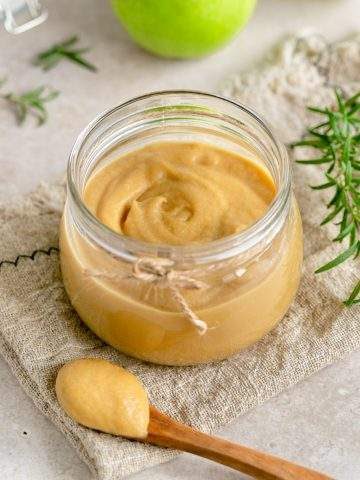
Lucette
A delicious recipe